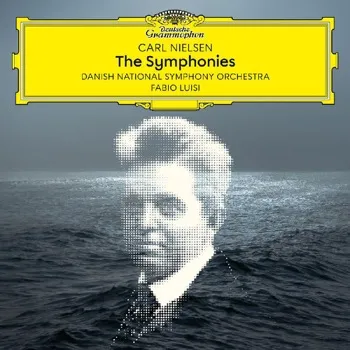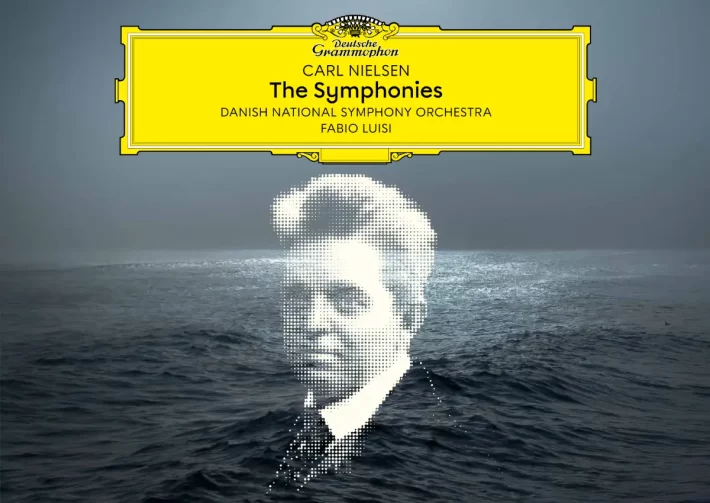The Danish NSO is, of course, no stranger to this repertoire, and has recorded this symphony cycle twice before: first, with Herbert Blomstedt in the 1970s (Warner Classics) and in the 1990s under Michael Schønwandt (Naxos). Danacord also has a historic mono cycle in its catalogue led by three different conductors. This new release is the Danes first with their current music director, Fabio Luisi, and, on the evidence of these performances, it is a remarkable partnership.

When Luisi assumed the role of Music Director in 2017, he had only conducted Nielsen’s fourth symphony. But when he arrived in Denmark he programmed a great deal of Nielsen’s music and the results of that exploration are a nearly perfect mix of energy, exactitude, songfulness and comprehensive realization of the music’s complex moods and emotions.
The excellence of these performances is readily apparent in the opening minutes of the first symphony. Luisi’s tempi are remarkably close to Oramo (BIS), Schønwandt, and Blomstedt’s second San Francisco cycle (Decca), but his sense of ebb and flow is more persuasive. It feels like he is shaping the flow of the music in the moment, which heightens the restlessness that characterizes the outer movements.
Luisi also imparts an Italianate warmth in Nielsen’s many lyrical melodies. Woodwind solos in the second movement are gorgeous, and in the faster music are full of character. Luisi’s tempo for the second movement is slower than the others listed above, but the extra time is used to reveal an emotional depth that, to some extent, eludes the others. The scherzo’s mercurial shifts of mood are wonderfully caught – listen to the sudden oasis of calm created when the brass chorale begins at 3’26” (track 3). The final movement takes off like a rocket, its rowdy joy de vivre maintained right through the thrilling coda.
I initially found the first movement of the second symphony a little slow when compared to the driven virtuosity heard from the Royal Stockholm Orchestra under Oramo. But Luisi’s slightly slower rendition uncovers a wealth of textural detail, and the Danish NSO plays with a fabulous unanimity of attack and articulation. Again, the character of the playing is consistently impressive, as is the ardor of the playing.
The “Sinfonia espansiva” (Symphony No. 3) is similarly successful, though some listeners may find the second movement too slow (it is roughly a minute and a half longer than the other performances used for comparison). Yet the finesse of the playing holds our attention, and the energy never sags.
The last three symphonies are even more enthralling. The “Inextinguishable” has a drive and determination that never wavers, fully capturing Nielsen’s “will to life.” The third movement’s opening cantilena is impassioned, and the final movement’s fugal writing has tremendous drive and clarity, with a timpani battle of visceral impact that makes the triumphant sounding of the “will to life/Inextinguishable” theme overwhelmingly emotional. Rarely has this music sounded more life-affirming.
In a recent Gramophone interview Luisi describes the fifth symphony as “a symphony against everything – against society, against rules, against conventions against itself and its own structure.” And that is certainly what is felt here: the opening of the first movement has a gloomy serenity, as the music struggles to settle on a theme. The snare drums’ disruption has rarely felt so threatening, finally silenced by a ferocious response from the full orchestra – one of many examples benefiting from Luisi’s operatic background. The second movement highlights the conductor’s keen ear for detail and the orchestra’s concern for transparency make the contrapuntal passages crystal clear.
A magnificent reading of the “Sinfonia semplice” ends the series. Luisi and his players make no apologies for the shockingly original and eclectic weirdness of this music – instead, they revel in it. I was repeatedly amazed by how strikingly modern it sounds, how often one instrumental section seemingly has nothing to do with the others. Again, I sense Luisi’s operatic background here, as he somehow holds everything together while encouraging his players to sound as if they will go off the rails at any moment.
Has the second movement Humoresque ever sounded stranger, with its madcap collection of sounds and chortles? The searing intensity of the string playing in the third movement brought to mind Bernstein’s Chicago Shostakovich seventh symphony, and the final variations are a tour de force for the players, each variation vividly characterized, the final raspberry delightfully shocking.
DGs recording is excellent if at times overly reverberant, the inner voices occasionally blurred. Liner notes are brief but informative. This is a superb set, and it seems there is more Nielsen coming from these forces, which I eagerly await – urgently recommended.
Carl Nielsen: The Symphonies
Danish National Symphony Orchestra
Fabio Luisi – Conductor
Deutsche Grammophon, CD 4863471




















